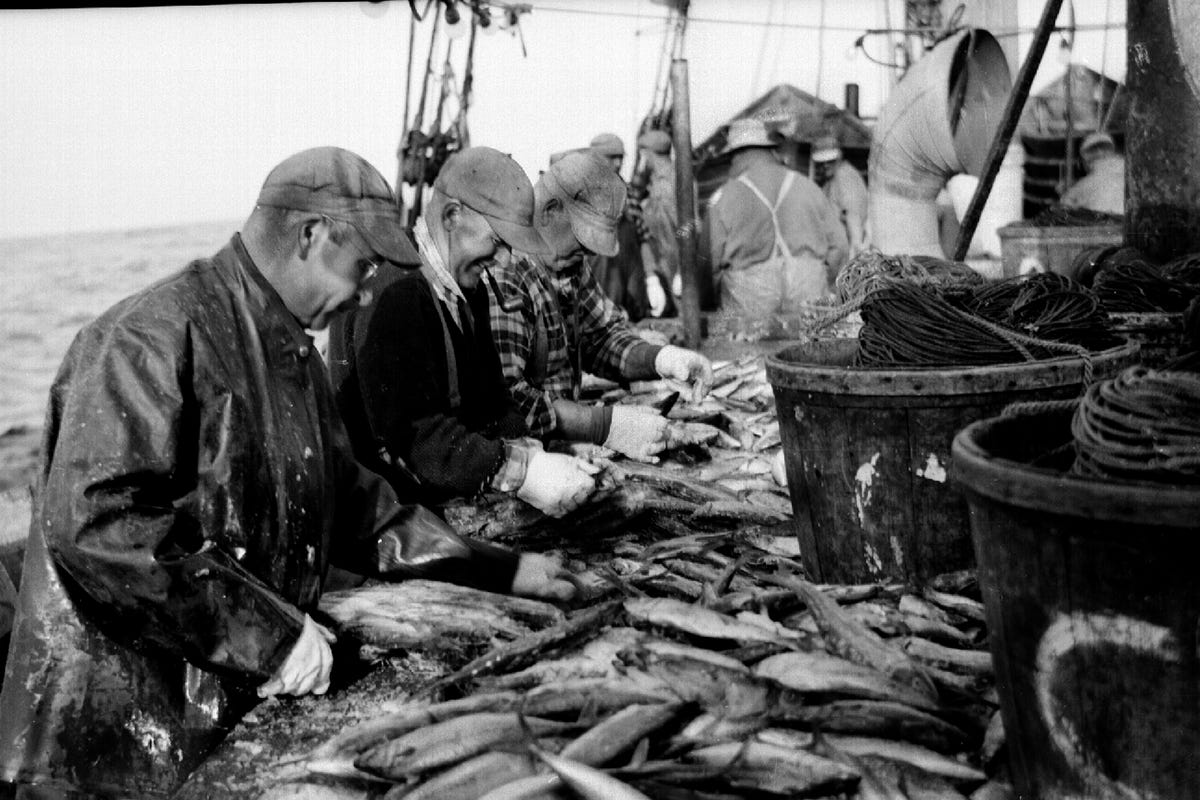A century of haddock
Cod’s cousin, Boston’s longtime favorite, embodies the American fishing experience
***
Haddock is Boston’s fish.
It’s Cape Cod’s fish too, though not as much as our namesake species. The two are close relatives, belonging to what biologists call the Gadidae family, “the true cods,” but there are distinctions for sure, and Boston took to our first cousin.
This had to do with the influx of Irish and Scots who knew haddock from the old country, and Catholic demand for fish every Friday was just as strong on this side of the Atlantic. It also had to do with haddock’s firm whiteness, some might sweetness, not strongly “fishy,” that joined potatoes on the plate in a symbiotic, comforting way.
How all this came into being is a tale that takes shape a century ago, though some elements sound contemporary indeed.
In 1920, the American fishery was at the start of its most profound transformation: Schooners under sail were being replaced by trawlers powered by internal combustion. That meant much greater quantities of fish could be landed by hauling scouring, dragging, broadcasting nets, far more efficient than lines recovered hand over hand.
Meanwhile, marketing and distribution of fresh fish improved. So did technology to freeze. The classic method that schooners on long voyages used to preserve, salting, which worked especially well with codfish, no longer was essential.
Enter the haddock fillet.
By 1921, huge haddock harvests ensued, with Boston the leading port because of its proximity to Georges Bank, the demand of big Boston markets, and fast train access to New York. Government records show that toward the end of the 1920s, in a single spike year, 120,000 tons of haddock landed out of Georges Bank – 240 million pounds. A report by researchers at Harvard University determined that in 1930, at the Boston pier alone, 37 million pounds of haddock landed. Codfish became haddock’s by-catch.
***
But there was a dark side to this success. Trawlers were using small-sized mesh in the nets they hauled, meaning pretty much everything in their broad path was caught; even the littlest fish could not pass through tiny diamond-shaped openings in the twine. This was very efficient, and very destructive. The same Harvard study from 1930 that documented 37 million pounds of haddock landed in Boston determined that on those trips another 70 to 90 million pounds of baby haddock – too small for market – were discarded overboard. Most of those fish would not survive that trauma, never mature or spawn.
This led to calls to force trawlers to use larger mesh. But there was no political will and no voluntary action. Not until the 1950s would mesh-size reforms and new requirements begin to take hold.
***
So the haddock fishery crashed. By 1933, official records show 25,000 tons of haddock harvested out of Georges, less than a quarter of the tonnage a few years earlier. The fishery did recover somewhat, and from around 1940 through the mid-1960s the harvest held between 40,000 and 60,000 tons per year. But by 1970 it was down to 15,000 tons. By 1990 there was almost no haddock harvested on Georges. People began using the term “commercially extinct,” predicting that haddock would never come back.
That too turned out to be wrong. With fishing pressure reduced, protected habitat, closures at spawning times, haddock did what they are made to do, reproducing in amazing numbers; one female can produce 850,000 eggs per spawn, as much as three million. Stocks began to rebuild.
Over the past decade National Marine Fisheries has reported that haddock are here again, though seem to be growing more slowly. Last year regulators using scientific sampling data set a total allowable catch (in theory the highest amount that can be harvested but keep a population healthy) at almost 680 metric tons on Georges Bank and another 116 metric tons in the Gulf of Maine — though most recent stock assessments again seem to be seeing a decline, cutting quotas once more.
Haddock’s rebound is testament to the amazing regenerative power of fish, and the ocean. That they were depleted so dramatically is testament to the remarkable capacity of people to create and employ efficient, destructive technology.
Finding the balance of those two forces, both manifested in a century of haddock history, continues to be the crucial challenge in fisheries management today.






